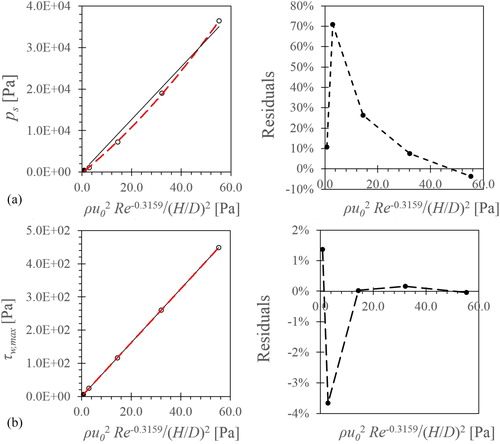Figures & data
Figure 1. Geometry and boundary conditions: (a) schematic representation of a vertically impinging jet; (b) boundary conditions for axisymmetric cases simulated in the present study, where the symmetry axis coincides with the x axis. The drawings are not to scale.
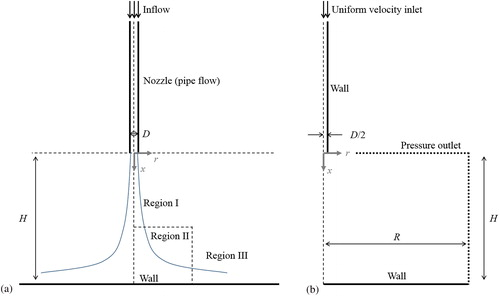
Table 1. Previous experimental and numerical studies on vertically impinging circular jets.
Table 2. Flow cases simulated in this study, where H/D = 20 is used throughout.
Figure 2. Axisymmetric grids used in this study (coarse grids): (a) grid A1, and (b) grid B1. All grid cells are represented.
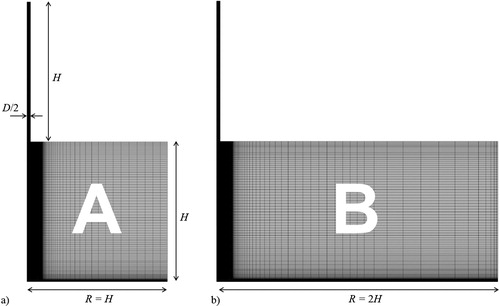
Table 3. Grid convergence index (GCI) for the fine grid solution (stagnation pressure ps and maximum wall shear stress τw,max), calculated according to EquationEquation 6(6)
(6) , based on Roache (Citation1994), for the validation case (D = 0.01 m, Re = 28,000).
Figure 3. Centreline velocity /u0 along the axial length x/D. This study: ▬ ▬ (red) SST Grid A1, ▬ (red) SST Grid A2, ▬ ▬ (black) SST Grid B1, ▬ (black) SST Grid B2, ▬ ▬ (green) ReaKEps Grid A1, ▬ (green) ReaKEps Grid A2, ▬ ▬ (blue) ReaKEps Grid B1, ▬ (blue) ReaKEps Grid B2. Reference experimental studies: –♦– H/D = ∞ (Giralt, Chia, and Trass Citation1977), △ H/D = 22.0 (Giralt, Chia, and Trass Citation1977), –○– H/D = 20 (Shademan et al. Citation2016), ■ H/D = 15.56 (Giralt, Chia, and Trass Citation1977). Note that results for grids A and B practically overlap.

Figure 4. Radial velocity /u0, at four radial distances, for a) SST model, b) ReaKEps model. This study: ▬ ▬ (red) SST Grid A1, ▬ (red) SST Grid A2, ▬ ▬ (black) SST Grid B1, ▬ (black) SST Grid B2, ▬ ▬ (green) ReaKEps Grid A1, ▬ (green) ReaKEps Grid A2, ▬ ▬ (blue) ReaKEps Grid B1, ▬ (blue) ReaKEps Grid B2. Reference experimental study: ◊ r/D = 0, △ r/D = 1, ■ r/D = 2, × r/D = 3 (Shademan et al. Citation2016). Note that results for grids A and B practically overlap.
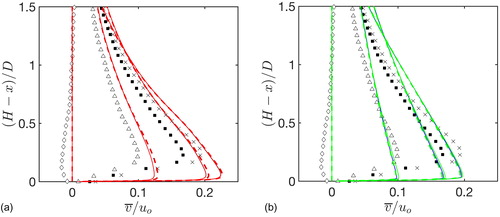
Figure 5. Wall pressure p/ps as a function of radial distance r/r1/2. This study: ▬ ▬ (red) SST Grid A1, ▬ (red) SST Grid A2, ▬ ▬ (black) SST Grid B1, ▬ (black) SST Grid B2, ▬ ▬ (green) ReaKEps Grid A1, ▬ (green) ReaKEps Grid A2, ▬ ▬ (blue) ReaKEps Grid B1, ▬ (blue) ReaKEps Grid B2. Reference studies: ▬ Beltaos & Rajaratnam (Citation1974) (experimental), ○ Shademan, Balachandar, and Barron (Citation2013) (RANS). Note that results for grids A and B practically overlap.
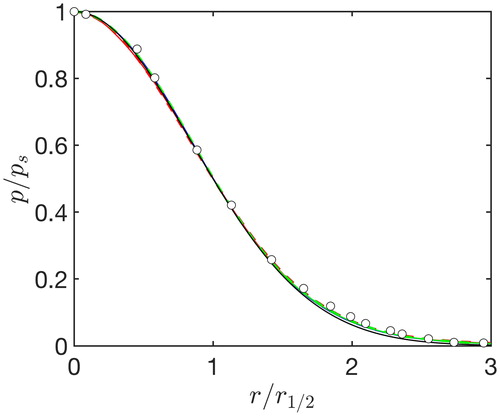
Figure 6. Dimensionless wall shear stress as a function of radial distance. This study: ▬ ▬ (red) SST Grid A1, ▬ (red) SST Grid A2, ▬ ▬ (black) SST Grid B1, ▬ (black) SST Grid B2, ▬ ▬ (green) ReaKEps Grid A1, ▬ (green) ReaKEps Grid A2, ▬ ▬ (blue) ReaKEps Grid B1, ▬ (blue) ReaKEps Grid B2. Reference studies: –□– H/D = 18, experimental (Bradshaw & Love Citation1961), –◊– H/D = 21.2, experimental (Beltaos & Rajaratnam Citation1974), * H/D = 16.5, experimental (Hanson, Robinson, and Temple Citation1990), –△– H/D = 18.5, RANS (Shademan, Balachandar, and Barron Citation2013), –●– H/D = 20, LES (Shademan et al. Citation2016). Note that results for grids A and B practically overlap.
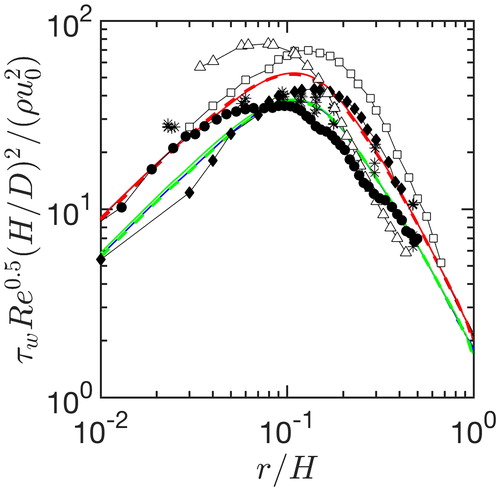
Figure 7. Simulated stagnation pressure ps, plotted against simulated maximum wall shear stress τw,max. Legend: solid black line – linear regression with zero intercept; dashed red line – second order polynomial regression. Coefficient of determination for linear regression with zero intercept: R2adj = 0.98331.

Figure 8. Simulated wall surface forces as a function of ρu02/(H/D)2: (a) stagnation pressure ps, and (b) maximum wall shear stress τw,max. Left-hand side: solid black line – linear regression with zero intercept; dashed red line – second order polynomial regression. Right-hand side: residuals correspond to the linear regression with zero intercept. Coefficient of determination for linear regressions with zero intercept: R2adj (ps) = 0.99992, R2adj (τw,max) = 0.98323.
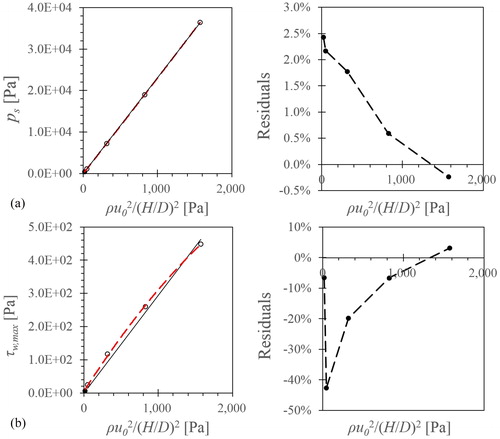
Table 4. Slope, m, and adjusted correlation coefficients, R2adj, for stagnation pressure ps and maximum wall shear stress τw,max, as functions of different scaling parameters.
Figure 9. Simulated wall surface forces as a function of ρu02/Re−1/2/(H/D)2: (a) stagnation pressure ps, and (b) maximum wall shear stress τw,max. Left-hand side: solid black line – linear regression with zero intercept; dashed red line – second order polynomial regression. Right-hand side: residuals correspond to the linear regression with zero intercept. Coefficient of determination for linear regressions with zero intercept: R2adj (ps) = 0.95645, R2adj (τw,max) = 0.99265.
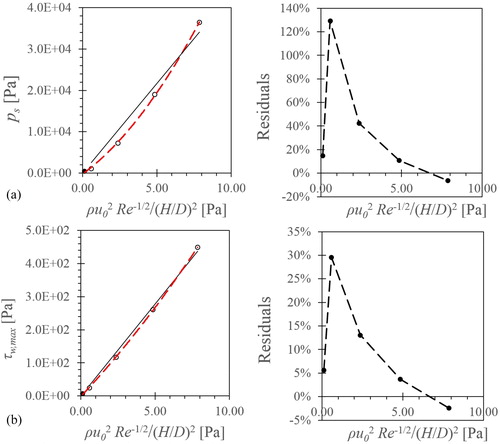
Figure 10. Simulated wall surface forces as a function of ρu02/Re−0.3159/(H/D)2: (a) stagnation pressure ps, and (b) maximum wall shear stress τw,max. Left-hand side: solid black line – linear regression with zero intercept; dashed red line – second order polynomial regression. Right-hand side: residuals correspond to the linear regression with zero intercept. Coefficient of determination for linear regressions with zero intercept: R2adj (ps) = 0.98326, R2adj (τw,max) = 0.99998.
